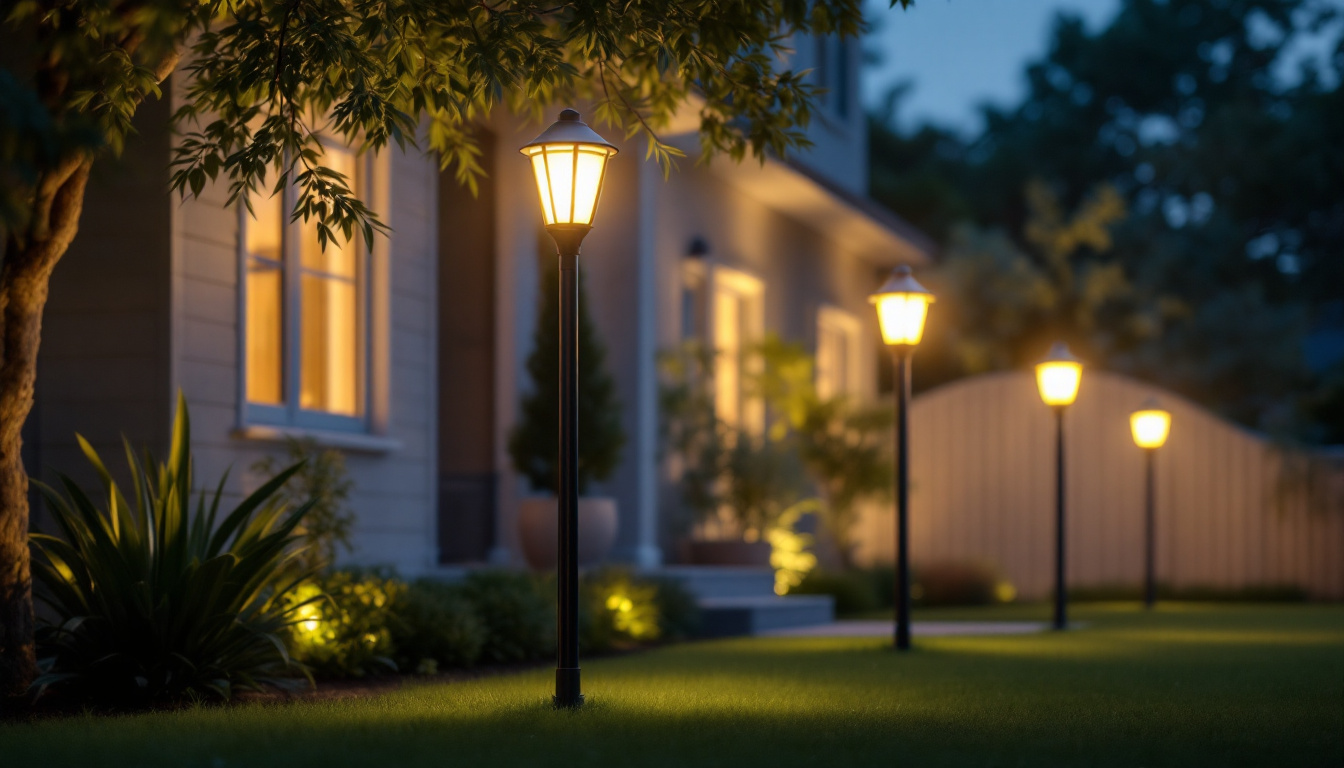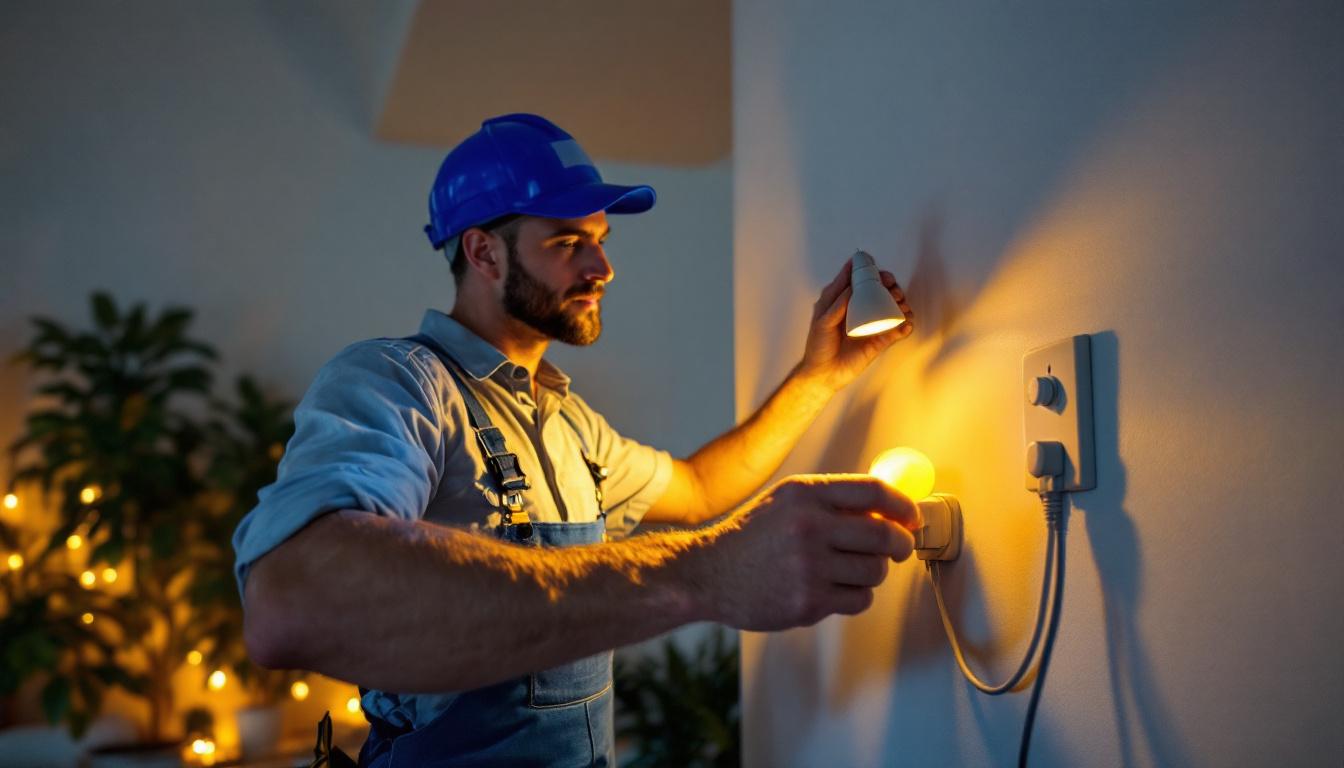
When it comes to outdoor lighting, yard light poles serve as a crucial element in enhancing visibility, safety, and aesthetics. However, lighting contractors often overlook several key aspects that can significantly impact the effectiveness and longevity of these installations. This article delves into the common oversights and offers insights to ensure that lighting projects are executed with precision and care.
Yard light poles are not merely functional; they play a vital role in creating an inviting atmosphere while ensuring safety in residential and commercial spaces. Properly placed light poles can illuminate pathways, driveways, and outdoor areas, reducing the risk of accidents and enhancing security. In addition to their practical benefits, these light sources can also serve as focal points in outdoor design, drawing attention to gardens, water features, or architectural highlights. The right lighting can transform an ordinary space into an enchanting environment, making it more enjoyable for gatherings or quiet evenings spent outdoors.
Moreover, the design and placement of these poles can influence the overall aesthetic appeal of a property. A well-thought-out lighting plan can complement landscaping features and architectural elements, adding value to the property. For instance, decorative light poles can evoke a sense of charm and elegance, while modern designs can convey a sleek and contemporary feel. Therefore, understanding the significance of yard light poles is essential for any lighting contractor looking to deliver quality services. By considering both functionality and design, contractors can help homeowners and businesses create spaces that are not only safe but also visually appealing.
One of the most critical decisions in the installation of yard light poles is the selection of materials. Contractors often default to standard options without considering the specific environmental conditions of the installation site. For instance, areas prone to harsh weather conditions may require poles made from corrosion-resistant materials such as aluminum or stainless steel. Additionally, the choice of materials can also affect the sustainability of the project; eco-friendly options, such as recycled materials, are becoming increasingly popular among environmentally conscious consumers.
Additionally, the finish of the pole can impact its durability and maintenance needs. A powder-coated finish, for example, not only enhances aesthetics but also provides an extra layer of protection against the elements. This can significantly reduce the frequency of repairs or replacements, ultimately saving money in the long run. Contractors should take the time to evaluate the best materials for each project, ensuring longevity and minimal upkeep. Furthermore, incorporating energy-efficient lighting solutions, such as LED fixtures, can enhance the overall performance of the yard light poles while promoting energy conservation.
The height and placement of yard light poles are often underestimated. Many contractors rely on standard heights without assessing the specific needs of the area. The ideal height can vary based on the purpose of the lighting—whether for security, ambiance, or task lighting. For instance, poles used for illuminating pathways may need to be shorter than those intended for parking lots or large open areas. This nuanced approach ensures that the light is distributed evenly and effectively, catering to the unique requirements of each space.
Moreover, the spacing between poles is crucial for achieving uniform lighting. Contractors should conduct a lighting design analysis to determine the optimal placement that minimizes shadows and dark spots. This attention to detail can make a significant difference in the overall effectiveness of the lighting installation. Additionally, considering the surrounding landscape, such as trees or buildings, can help in determining the best locations for poles to avoid obstructions that could hinder light distribution. By taking these factors into account, contractors can create a cohesive and functional lighting scheme that enhances both safety and aesthetics in outdoor environments.
Electrical planning is another area where contractors may overlook critical details. Properly sizing the electrical components and ensuring compliance with local codes can prevent future issues and ensure the safety of the installation.
Contractors must perform accurate load calculations to determine the appropriate wiring and circuit breakers for the yard light poles. Underestimating the load can lead to overheating, tripped breakers, or even fire hazards. It’s essential to consider the wattage of the light fixtures, as well as any additional equipment that may be connected to the circuit.
Furthermore, ensuring that the wiring is suitable for outdoor use is vital. Using weather-resistant cables and connectors can help prevent electrical failures and prolong the lifespan of the lighting system.
Grounding is a critical safety measure that is often overlooked. Proper grounding of light poles helps protect against electrical surges and lightning strikes, reducing the risk of damage and ensuring the safety of users. Contractors should familiarize themselves with grounding techniques and ensure that all installations comply with local electrical codes.
In addition to grounding, incorporating safety features such as circuit breakers and GFCI outlets can further enhance the safety of the lighting system. These measures not only protect the equipment but also provide peace of mind to property owners.
The shift towards energy-efficient lighting solutions has transformed the outdoor lighting landscape. While many contractors are aware of LED technology, there are still nuances that can be overlooked during the selection process.
LEDs come in various color temperatures and lumen outputs, which can significantly impact the ambiance and functionality of outdoor spaces. Contractors should take the time to educate themselves on these options to recommend the best solutions for each project. For instance, warmer color temperatures may be more suitable for residential areas, while cooler temperatures could be ideal for commercial spaces.
Additionally, the use of smart lighting technology is gaining traction. Integrating smart controls can enhance the functionality of yard light poles, allowing for features such as dimming, scheduling, and remote control. Contractors should consider these advancements to offer clients modern, efficient solutions.
As awareness of light pollution grows, contractors must be mindful of how their installations can impact the surrounding environment. Proper shielding and directional lighting can minimize light spill and reduce the negative effects of artificial light on wildlife and neighboring properties.
Incorporating designs that focus on downlighting rather than uplighting can help achieve this goal. Contractors should engage in discussions with clients about the importance of responsible lighting practices and how they can contribute to a more sustainable environment.
Even the best-installed yard light poles require maintenance to ensure their longevity and effectiveness. Contractors should educate clients on the importance of regular upkeep and provide guidance on what to look for in terms of maintenance.
Encouraging clients to conduct routine inspections of their lighting systems can help identify potential issues before they escalate. This includes checking for loose connections, damaged fixtures, and signs of wear and tear on the poles themselves. Early detection can save time and money in repairs and replacements.
Additionally, seasonal maintenance tasks such as cleaning fixtures and checking for obstructions can enhance the performance of the lighting system. Contractors can offer maintenance packages to clients, ensuring that their lighting remains in optimal condition year-round.
As technology advances, upgrading existing lighting systems can provide enhanced efficiency and functionality. Contractors should remain informed about new products and techniques that can be retrofitted into older installations. This not only benefits the client but also positions the contractor as a knowledgeable professional in the field.
For instance, retrofitting existing fixtures with LED bulbs can significantly reduce energy consumption and maintenance costs. Contractors should assess the feasibility of upgrades during routine inspections and discuss potential options with clients.
Effective communication with clients is essential for successful lighting projects. Many contractors may overlook the importance of educating clients about their options and the factors that influence the effectiveness of yard light poles.
Contractors should take the time to discuss project goals and set realistic expectations with clients. This includes explaining the limitations of certain lighting solutions and the potential impact of environmental factors on performance. By managing expectations, contractors can foster positive relationships and reduce the likelihood of misunderstandings.
Additionally, providing clients with a clear timeline and budget breakdown can help them feel more involved in the decision-making process. Transparency fosters trust and can lead to repeat business and referrals.
After the installation is complete, contractors should offer ongoing support to clients. This can include providing maintenance tips, answering questions about the lighting system, and being available for follow-up consultations. A commitment to post-installation support demonstrates professionalism and can enhance client satisfaction.
Yard light poles are a fundamental aspect of outdoor lighting that requires careful consideration and planning. By addressing the common oversights discussed in this article, lighting contractors can enhance their projects’ effectiveness, safety, and aesthetics. From selecting the right materials and ensuring proper electrical planning to understanding the latest lighting technologies and maintaining open communication with clients, every detail matters.
Ultimately, a comprehensive approach to yard light pole installations not only benefits the contractor but also elevates the overall client experience. By prioritizing education, safety, and efficiency, lighting contractors can position themselves as leaders in the industry, delivering exceptional results that stand the test of time.
Ready to elevate your lighting installations with the highest quality yard light poles and fixtures? At LumenWholesale, we offer contractors an exceptional range of spec-grade lighting products that combine durability, efficiency, and style. Say goodbye to inflated markups and hello to unbeatable wholesale prices, all while enjoying the convenience of free shipping on bulk orders. Don’t compromise on quality or cost. Visit LumenWholesale today and discover the best value in wholesale lighting for your next project.

Discover how mastering electrical receptacles can give you the competitive edge in securing more lighting contracts.

Discover essential insights into 6 ft LED light strips with our comprehensive guide tailored for lighting contractors.

Discover innovative cost-saving strategies for lighting contractors with GE Lighting.

Discover essential insights and expert tips for lighting contractors on installing plug-in can lights.